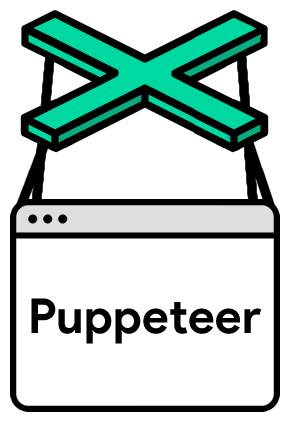Capture Method
- puppeteer:
puppeteeruses a headless Chrome browser to capture screenshots. It can render pages just like a regular browser, allowing for accurate capture of complex layouts, animations, and dynamic content. Puppeteer provides a programmatic interface to control the browser and take screenshots of any part of the page. - html2canvas:
html2canvascaptures screenshots by rendering the DOM elements directly in the browser. It creates a canvas element and draws the content of the selected elements onto it, simulating the appearance of the page. This method is client-side and does not require any external services. - screenshot-desktop:
screenshot-desktopcaptures screenshots of the user's desktop or specific application windows using native OS APIs. It is a desktop-focused solution that provides quick and simple screen capture functionality, but it does not interact with web pages or DOM elements.
Complexity
- puppeteer:
puppeteerhas a steeper learning curve due to its extensive API and headless browser setup. It is more complex to configure, especially for automated tasks, but it offers greater flexibility and control for advanced users and applications. - html2canvas:
html2canvasis relatively easy to use and integrate into web applications. It requires minimal setup and can be used with just a few lines of JavaScript code. However, its limitations with complex layouts and cross-origin content may require additional handling. - screenshot-desktop:
screenshot-desktopis straightforward and simple to use, especially for capturing desktop screens. It requires minimal configuration and is easy to integrate into Node.js applications. However, it is limited to desktop environments and does not provide advanced features.
Cross-Origin Support
- puppeteer:
puppeteerhandles cross-origin content more effectively since it operates in a headless browser environment. It can render pages as a regular browser would, including cross-origin images and elements. Puppeteer also allows for more control over network requests, making it easier to manage CORS issues if needed. - html2canvas:
html2canvashas limitations with cross-origin content due to browser security restrictions. It cannot render images or elements from different domains unless they have the appropriate CORS headers set. This can result in incomplete or distorted screenshots when capturing content from multiple sources. - screenshot-desktop:
screenshot-desktopdoes not deal with cross-origin content as it captures the screen directly from the user's desktop. It is not affected by web security policies since it operates outside the browser environment.
Use Case
- puppeteer:
Use
puppeteerfor automated screenshot generation, web scraping, testing, and capturing high-quality images of web pages. It is ideal for server-side applications, automated testing frameworks, and scenarios where you need precise control over the rendering process. - html2canvas:
Use
html2canvasfor client-side applications where you need to capture screenshots of specific web page elements or entire pages. It is suitable for creating visual content, generating images for social media sharing, or capturing data for reports directly from the browser. - screenshot-desktop:
Use
screenshot-desktopfor desktop applications or Node.js projects that require quick screen captures. It is useful for creating tools that allow users to capture their screens, generate thumbnails, or integrate screen capture functionality into desktop software.
Ease of Use: Code Examples
- puppeteer:
Capture a screenshot of a web page using
puppeteerconst puppeteer = require('puppeteer'); (async () => { const browser = await puppeteer.launch(); const page = await browser.newPage(); await page.goto('https://example.com'); await page.screenshot({ path: 'screenshot.png' }); await browser.close(); })(); - html2canvas:
Capture a screenshot of a DOM element using
html2canvashtml2canvas(document.getElementById('elementId')).then(canvas => { document.body.appendChild(canvas); const img = canvas.toDataURL('image/png'); console.log(img); }); - screenshot-desktop:
Capture a screenshot of the desktop using
screenshot-desktopconst screenshot = require('screenshot-desktop'); screenshot() .then((img) => { // img is a Buffer containing the screenshot // You can save it to a file or process it further }) .catch((err) => { console.error(err); });

